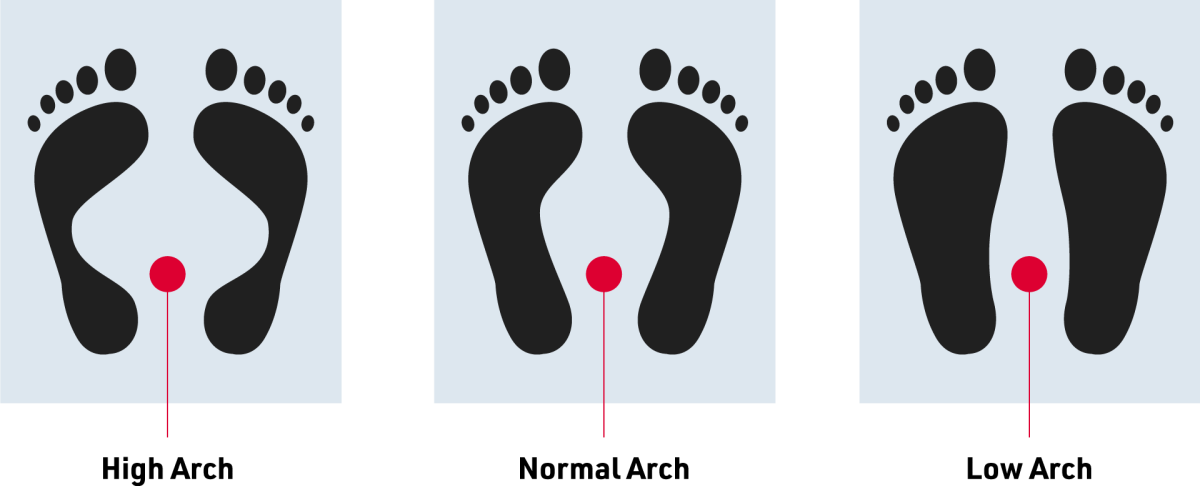Our feet consist of 28 muscles, 33 joints, and over 100 ligaments. While taking an average of 7,500 steps daily and covering around 60,000 km in a lifetime, problems or trauma in the foot can significantly affect not only the foot itself, but also the hip, the back, and more.
I joined Cregg Webber, Physiotherapist and Paul Makinen, Certified Pedorthist, for an online discussion about the important functions of our feet and common foot conditions. We also spoke about misconceptions surrounding foot-related issues and shared tips on what to look for when selecting footwear.
Below are some key takeaways from the discussion. Play the video above to watch the full webinar.
1. Your foot has many functions, including being a shock absorber
The foot is an engineering marvel, with multiple different jobs to do ranging from being flexible for both movement and balance, to being a shock absorber. To work as a shock absorber, the arches of the foot play a pivotal role, flexing and flattening slightly to absorb impact, while the plantar fascia and fat pads further enhance cushioning. This intricate system reduces stress on the rest of the body, protecting joints and minimizing the risk of injury.
The main arch is generally categorized into two types: high arch (supinated) and flat arch (pronated). High arch feet are rigid and less shock absorbing, while low arch, or flat feet. are flexible but can overstress structures.
2. Understanding your foot type can help minimize risk of injury

A simple way to determine your foot type at home involves wetting the foot and stepping on something dry, such as paper or concrete, to observe the contact pattern. A high arch leaves minimal contact, a normal arch shows even weight distribution, and a flat arch displays extensive contact.
Your foot type plays a significant role in your risk for particular conditions or injuries. Individuals with high arches often experience a stiffer foot structure, leading to poor shock absorption. This can result in conditions such as plantar fasciitis (pain at the bottom of the heel), stress fractures, and lateral ankle sprains due to the increased stress on the bones and tissues.
Conversely, those with flat feet tend to have overly flexible structures, causing the foot to roll inward excessively. This can lead to issues like Achilles tendonitis (pain in the leg above the heel), shin splints, and medial ankle sprains due to the lack of stability and increased strain on the tendons and ligaments.
3. Foot type and activity level play a factor in determining proper footwear choices
Understanding your foot type is key for selecting appropriate footwear and preventative measures to minimize these risks and maintain overall foot health. Making the proper footwear choices depends on two major factors: foot type and activity. High arch feet will usually do better with a more shock-absorbing style to help reduce impact. This foot type also tends to supinate (tip outward) and therefore, look for a show with a flexible sole.
Flat feet are typically more flexible and therefore tend to collapse under the weight of the body resulting in arch collapse. This foot type usually benefits from more stability in footwear. As the feet collapse, they tend to get wider and need wider-fitting footwear. Key features to look for in shoes include appropriate mid-foot width, enough stiffness to provide stability, and a spacious toe box.
For diabetic feet, ensuring a good fit, avoiding shoes with lots of seams inside, and regularly checking the inside of shoes for foreign objects are crucial to reduce potential issues.
Orthotics, which can be custom made to your foot and placed in the shoe, can also provide support for all foot types, promoting normal movement while reducing strain.
4. Physiotherapy and/or pedorthic care can help keep you “on your feet”
With a focus on treatment and prevention for foot-related issues, physiotherapy helps improve strength, flexibility, and balance through education, targeted exercise, and manual therapies alleviating pain and improving mobility. Pedorthic care creates customized footwear and orthotics tailored to your specific foot type and condition, providing the necessary support and alignment.
Together, these approaches can help to manage or prevent conditions such as plantar fasciitis and neuropathy, leading to optimal foot function and overall mobility. By combining the expertise of physiotherapists and pedothists, you can enjoy an active lifestyle, supporting your independence and quality of life.
To schedule an appointment, contact a pt Health clinic near you or book an appointment online.
This blog originally appeared on Lifemark.ca and was written by Andrea Kaye, BScPT, Dip Manip, CGIMS, FCAMPT | National Manager, Clinician Talent
